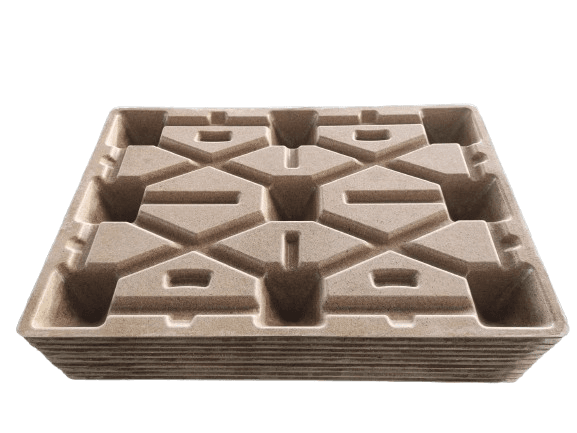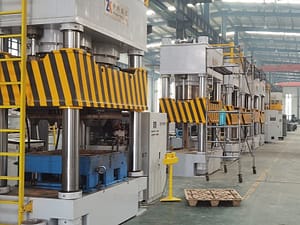Molded pallet Introduction
In today’s environmentally conscious world, businesses are constantly seeking ways to reduce their carbon footprint and improve operational efficiency. One area where significant improvements can be made is in the supply chain, where traditional wooden pallets have long been a staple. However, molded pallets, also known as presswood pallets or compressed pallets, are emerging as a more sustainable and cost-effective alternative.

What are Molded Pallets?
Molded pallets are produced by compressing wood fibers or recycled wood waste at high temperatures and pressures. This process results in a dense, durable, and dimensionally stable pallet. Unlike traditional wooden pallets, molded pallets are free of nails, splinters, and other potential hazards, making them safer to handle.
Benefits of Molded Pallets
- Sustainability: Molded pallets are often made from recycled wood waste, reducing the demand for virgin timber and minimizing deforestation. Additionally, they are more resistant to pests and decay, extending their lifespan and reducing waste.
- Cost-Effective: While the initial investment in a pallet molding machine may be higher than purchasing traditional wooden pallets, the long-term cost savings can be significant. Molded pallets are often lighter, stronger, and more durable, reducing transportation costs and the need for frequent replacements.
- Space-Saving: The uniform density and smooth surface of molded pallets allow for efficient stacking, maximizing storage space. This can lead to significant savings in warehouse and transportation costs.
- Customization: Molded pallets can be customized to meet specific customer requirements, including size, weight capacity, and surface treatments. This level of customization is difficult to achieve with traditional wooden pallets.
- Easy to Clean and Sanitize: The smooth, non-porous surface of molded pallets makes them easy to clean and sanitize, making them ideal for use in food and pharmaceutical industries.
The Pallet Molding Process
The production of molded pallets involves several steps, including:
- Preparation of wood fibers: Wood chips or sawdust are prepared and mixed with a binding agent.
- Molding: The prepared material is placed in a mold and subjected to high heat and pressure.
- Curing: The molded pallet is allowed to cool and cure, resulting in a strong and durable product.
Key Benefits of Using a Pallet Molding Machine
- Increased efficiency: Automated pallet molding machines can produce large quantities of pallets in a short amount of time.
- Consistent quality: Molded pallets produced by machines have a consistent size, shape, and strength.
- Reduced labor costs: Automation can significantly reduce the labor required to produce pallets.
Conclusion
Molded pallets offer a sustainable and cost-effective alternative to traditional wooden pallets. Their durability, customization options, and environmental benefits make them an attractive choice for businesses looking to improve their supply chain efficiency. By investing in a pallet molding machine, businesses can reduce their environmental impact, lower costs, and improve overall operations.


